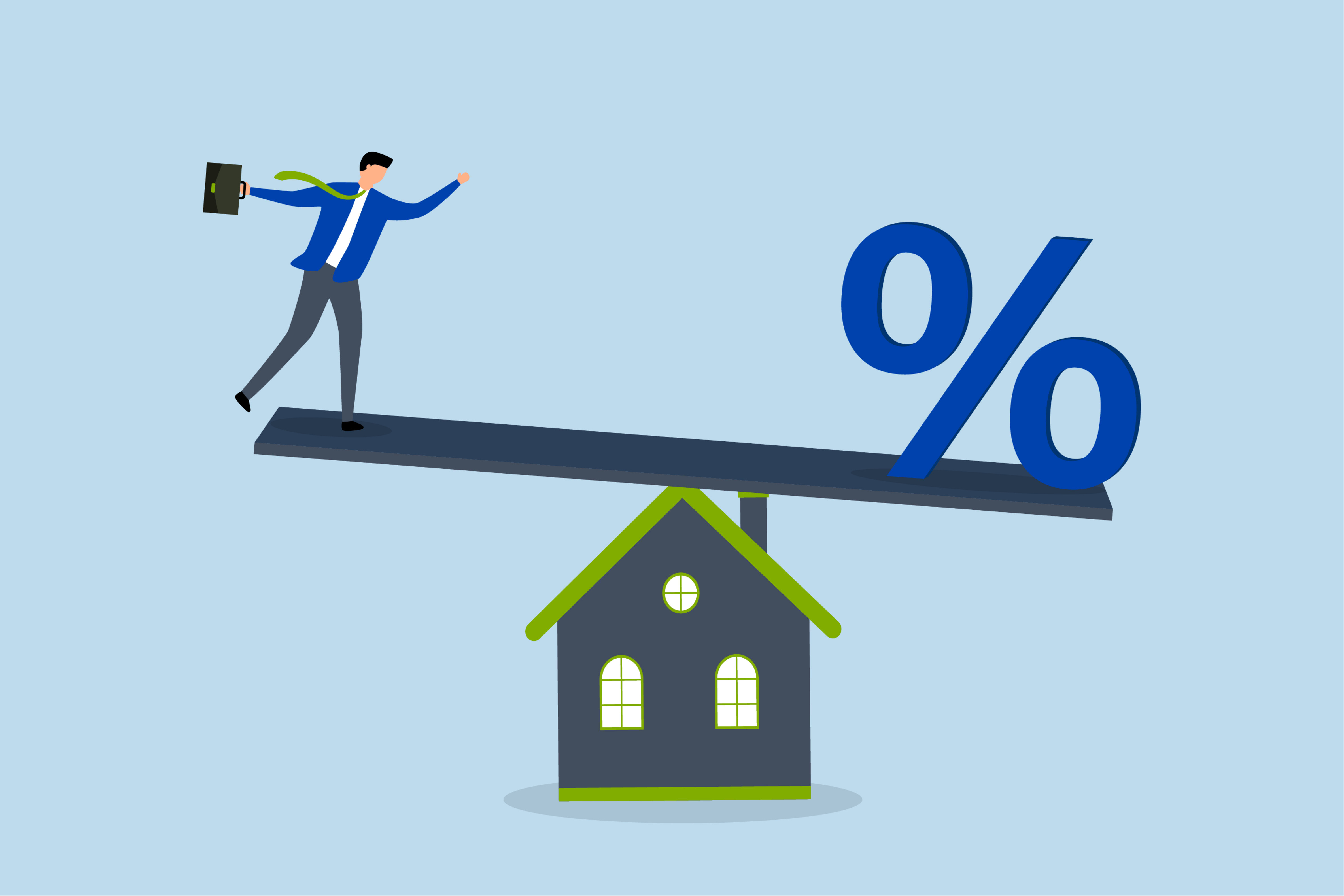Investing in real estate requires strategic financial planning and access to the right funding options. One such option is the DSCR loan, a unique type of financing that evaluates the cash flow generated by a property to determine loan eligibility. Understanding DSCR loans can open new doors for real estate investors looking to expand their portfolios.
What is a DSCR Loan?
A DSCR (Debt Service Coverage Ratio) loan is a type of investment property loan that uses the property's income to determine the loan amount. Unlike traditional loans that rely heavily on the borrower’s credit score and personal income, DSCR loans focus on the income-producing potential of the property itself.
Importance of DSCR in Real Estate Financing
The Debt Service Coverage Ratio is crucial in real estate financing because it provides a clear picture of a property's ability to generate enough income to cover its debt obligations. A higher DSCR indicates a lower risk for lenders, making it a vital metric in securing a loan.
Understanding Debt Service Coverage Ratio (DSCR)
Definition and Calculation of DSCR
The DSCR is calculated by dividing the actual or potential rental income of a property by its total debt service. The formula is:
The Numbers Game:

Let’s break it down with an example.
Say your rental property generates $5,000 per month in income, and your monthly expenses, including PITI and HOA dues, sum up to $4,000.
In this case your DSCR would look like this: $5,000 (rental income) / $4,000 (PITI) = 1.25 DSCR.
This robust DSCR would easily qualify you for a DSCR rental loan, ensuring your investment success.
A DSCR greater than 1 means the property generates more income than needed to cover debt payments, while a DSCR less than 1 indicates potential difficulty in meeting debt obligations.
Why DSCR Matters to Lenders and Borrowers
For lenders, DSCR provides an indication of the risk involved in lending. For borrowers, a good DSCR can lead to better loan terms and increased chances of approval. It aligns the interests of both parties by ensuring that the property can sustain its debt load.
Benefits of DSCR Loans
Flexibility in Loan Approval
DSCR loans offer greater flexibility in approval compared to traditional loans, especially for investors with fluctuating personal incomes. The focus on property income allows for a broader range of applicants to qualify.
Potential for Higher Loan Amounts
Because DSCR loans are based on the income potential of the property, investors may qualify for higher loan amounts, enabling them to finance larger or multiple properties.
Advantages for Real Estate Investors
For real estate investors, DSCR loans provide an excellent way to leverage their investments without relying heavily on tax returns or personal financial statements. This can simplify the loan process and accelerate portfolio growth and increase overall returns.
To qualify for a DSCR loan, investors typically need to demonstrate that the property has a DSCR of at least 1.1. Lenders will evaluate the property’s current income on a DSCR refinance loan and projected income on a purchase DSCR loan.
Key Financial Metrics to Consider
Aside from DSCR, lenders may look at other metrics such as loan-to-value (LTV) ratio, property condition, and market trends. These factors help in assessing the overall risk and viability of the loan.
Comparing DSCR Loans with Traditional Loans
Differences Between DSCR Loans and
Conventional Loans
DSCR loans focus on property income rather than personal income, making them more accessible for investors. Conventional loans, however, often require tax returns and personal income verification.
When to Choose a DSCR Loan Over Other
Financing Options
Investors should consider DSCR loans when the property’s income is strong and consistent, especially if personal financial credentials do not meet conventional loan standards. DSCR loans are also ideal for investors seeking to maximize leverage.
Tips for Improving Your DSCR
Strategies to Enhance Your Debt Service Coverage Ratio
1. Increase Rental Income:
Implement strategies to raise rents, such as property upgrades or targeting higher-paying tenants.
2. Reduce Operating Expenses:
Cut unnecessary costs and improve operational efficiency.
3. Refinance Existing
Debt:
Lower interest rates through refinancing to reduce total debt service.
Frequently Asked Questions About DSCR Loans
Common Queries and Concerns Addressed

- What is the minimum DSCR required? Typically, lenders require a DSCR of at least 1.1.
- Can I use a DSCR loan for any type of property? DSCR loans are commonly used for income-producing properties like single family residence, condo, townhome, and 2-4 units.
- How long does the DSCR loan process take? The process can vary but generally takes 3 to 4 weeks from application to closing.
Tips for Success
1. Choose Your Property Wisely:
Thorough research is critical before you buy a property – both to ensure you’re making a wise investment decision and to improve your chances of getting a loan. in that research, you should include a rental market analysis (RMA), which will help you assess whether a specific area would be good for a rental property investment.

2. Prep Your Credit:
A great credit score is one of the best ways to improve your shot at a loan- DSCR Loan or otherwise. It can also qualify you for lower interest rates, which means both a smaller monthly payment and fewer expenses in the long haul.

3. Gather Proof of Assets Early:
You wont need W-2’s, income taxes, or other common documentation for these loans, but you will need to prove your liquid assets. This can come by way of bank statements, retirement account statements, stocks, or other paperwork and varies depending on your situation and source of funds.

4. Have Proof of Rent Ready:
If you’re refinancing a rental property using a DSCR Loan, make sure you have proof of your recently paid rent ready. In the event the home appraises for a market rent lower than what you’re currently charging, you’ll need documentation proving otherwise.
If you can show your lender your property commands higher rents, it will make qualifying for the loan easier and, potentially, even allow you to borrow more. This can be particularly helpful in cash-out scenarios.

5. Be Prepared for Prepayment Penalties
Most rental property loans are designed for long-term financing, so many come with prepayment penalties. This means you’ll owe a fee should you pay off the loan before a certain period-typically about three years after closing.
The Ultimate Guide for DSCR Rental Loans eBook
Download our free eBook to learn the ins and outs of DSCR Rental loans and everything you need to know to apply and qualify for your loan.
More Content For You:
Investment Property Mortgage Rates and Loan Requirements 2023
Why No-income Doc Rental Loans are Fast and Easy
How to qualify for a No-doc Rental Property Loan
Questions?
Click the live chat window on our site or call (888) 677-2526. Our team is ready to assist you!
About HomeLife Mortgage
For more than 25 years, HomeLife Mortgage has built a strong reputation in California and Florida as a leading mortgage broker, servicing the needs of borrowers who have been unable to obtain conventional financing. HomeLife Mortgage is at the forefront of non-bank lending offering the next generation of mortgages including Jumbo Loans, Real Estate Investor Loans, and Bank Statement Loans.


_Page_01-1.jpg?width=229&height=296&name=Non%20Doc%20Rental%20Properties%20(Final)_Page_01-1.jpg)



